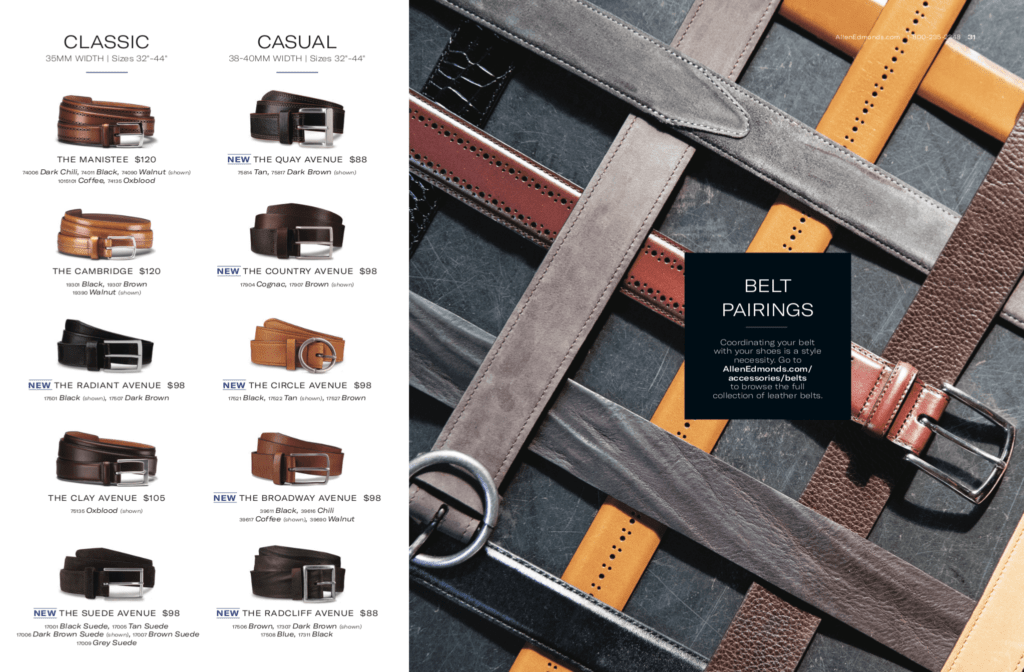I’m in awe at the number of brands who are jumping on the idea that catalogs provide a larger opportunity to not just sell products, but to engage both prospects and customers on a more meaningful level. I’m equally amazed at the number of brands, especially those that have been mailing for decades, who have continued using the tried and true “rules” of catalog marketing without evolving to meet the needs of the new consumer. So, who has it right?
I have an opinion.
But first, consider the idea that the role of a catalog has changed. Dramatically. If you are a frequent reader of this blog, you’ll know that we believe a catalog must do three things. They must DISRUPT the recipient, DELIGHT them with incredible products and content then DRIVE the reader to do something.
While the first two are critical to success, I don’t believe most brands create strong enough calls-to-action to truly DRIVE engagement. We see many brands that dabble with this concept by including copy like, “Go online for more …” or “Visit our website …” or the inclusion of a hashtag campaign that doesn’t hold any appeal. It’s not enough. If your brand isn’t working hard to drive activity then you are most certainly neglecting a powerful opportunity.
A catalog holds an incredible opportunity to become your biggest DIGITAL CHAMPION!
That’s right. A Digital Champion. Where are most purchases made? Online. Where does most of your important content reside? Online. The proactive nature of a catalog offers incredible opportunity to drive digital activity and ultimately, purchases.
The best way to demonstrate this concept is to present five of these brands that are headed in the right direction.
OLD SCHOOL GOES NEW SCHOOL
Did you ever think that the Vermont Country Store would beat you the Augmented Reality (AR) game? It’s true, this catalog that celebrates the “General Store of Yesteryear” is dabbling in tomorrow’s technology. Check out the lower, bottom corner of the most recent catalog back cover. It asks you to download a free app and “Watch this page come alive.” I tried it out and the process was flawless. What was the payoff? A clever video featuring the family and a virtual walk through the general store. It also gave me the ability to immediately purchase the products found on the back cover.
Sure, it’s possible they only tested AR to receive the postal discount, but it was a smart move regardless of motive. In this ever-changing marketing landscape, brands MUST try new things, bold things, or risk falling behind the curve.
Others might question if the Vermont Country Store audience cares about or understands AR. It’s a curious thing, but I’ve noticed that older audiences actually have the time to discover and learn new things. My only suggestion is that the call-to-action had no promise of a pay-off. In this case, tell the reader what they’ll experience!


WHO WOULDN’T WANT TO CELEBRATE MOM?
Yankee Candle ran a clever campaign a few years ago that still has me impressed. For Mother’s Day, they asked readers to “Tell us about Mom. Write it. Snap it. Share it at our in-store celebration,” or they could visit their website and share a story or picture of Mom.

Who wouldn’t want to honor their mom in this way? Of course participants made sure their mom saw the story, which only expanded the reach. Brilliant.

And Yankee Candle mentioned this campaign several places in the catalog, knowing it would take more than one look to get noticed. Best yet, I have it on good authority this was a huge success both in stores and online.
PROVING YOUR STYLE
Allen Edmonds, maker of fine shoes and apparel for men, stakes their claim in the fashion industry. They don’t just sell fashion, but invite their audience to engage with others that share a unique style sensibility. Their models have become part of the story. They chose a collection of men – influencers, innovators and individuals of diverse interests – who capture the spirit of innovation and creation in their own lives, which reflects the values and mission of the Allen Edmonds brand. The catalog does a wonderful job of asking readers to join the conversation, read these men’s blogs and follow them on Instagram. And they don’t just do it once or twice, but throughout the entire catalog.
You’ll find copy like, “As a men’s fashion blogger and influencer, Sabir Peele curates his own distinct style. He’s helping change the rules on how men dress …” And then, the catalog asks the reader to “Follow men’s style influencer Sabir Peele on Instagram.”


This campaign serves a purpose. It not only positions Allen Edmonds as a distinctive brand but it offers education and content that supports their differentiation.
But the catalog doesn’t stop there. Several times, the copy includes calls-to-action that invite readers to do something. For instance, on their belt spread they ask readers to “Coordinate your belt with your shoes” and offers a wider selection online in a bold graphic presentation (below).


SOMETHING THAT MATTERS
Relax the Back is in the business of relieving pain. For their customers, the desire for wellness is a big part of their lives. Throughout the catalog, they share information on how to “Start living your best life.”


They take it one step further and provide a wellness scale in which customers can learn where they rank in terms of their goals. Several times in the catalog, they invite readers to “Discover your wellness profile” by going online and taking a survey. For some, this is the first step to finding products that will help towards their wellness goal.
STORY TIME
For years, I’ve been a huge fan of Title Nine. This brand always delights with their authenticity, content and now, the invitation to share a story. Their winter catalog, promoted a campaign called #GiftOutsideTheBox.


Title Nine understands how society has moved to “Experiential Economy” one which people are choosing experiences over products. Missy Park shares a heart-warming story of experiencing a mountain biking trek with her daughter and how precious it was. Then, she asks readers, “What was your best given or received? Could a box even contain it? How do you #GiftOutsideTheBox? Share your thoughts with me.”

I love this campaign because it reflects their brand and asks for a conversation. But then, throughout the catalog it cleverly ties the campaign in with product headlines, like, “Dress Outside the Box.” Yep, still a fan girl.
What can we learn from these brands?
- Test new ideas, try them more than once
- Be bold in your invitation and present it multiple times across all channels
- Align yourself with influencers and events that fit closely with your brand
- Create an opportunity for customers to share their story
- Provide content that truly matters
Understanding customer triggers may require research. Once you know what motivates customers, your ability to craft a message allows you to reach them more effectively and understand not only what they want, but how to encourage action. Tony Hsieh of Zappos coined the term ICEE, which stands for “Interesting, Compelling, Educational or Entertaining.” This acronym is a perfect filter when planning your DRIVE strategy. Make sure that any “hook” you create is interesting, compelling, educational or entertaining to your customers, not your marketing team.
I am obsessed with this topic and will continue to look for more examples to share in my next post. Please send examples of brands you feel are “getting it right,” to loisb@jschmid.com
Tags: #digitalChampion, Allen Edmonds, catalog marketing, Digital Champion, omnichannel, Relax The Back, Title Nine, Vermont Country Store, Yankee Candle
